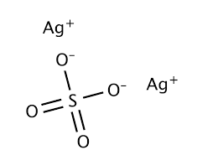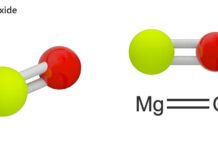Chemical Bonding:

Definition:
- A chemical bond is defined as the attractive force that holds two atoms together in a molecule or an ion.
- In the formation of a chemical bond the atoms interact with each other by losing, gaining or sharing of electrons to acquire stable outer shell of eight electrons.
Octet rule:
The tendency of the atoms to have eight electrons in their outermost shell is known as octet rule or rule of eight.

Types of bond:
1.Ionic bond
The bond is formed by transfer of valence electrons from one atom to another atom.
E.g:- NaCl
In the formation of Sodium chloride, the sodium has electronic configuration 2,8,1 and the chlorine has the electronic configuration 2,8,7 and thus Na acquires the configuration of Ne 2,8 and Cl acquires the configuration of Ar 2,8,8.
The electron lost by Na atom is accepted by Cl atom and the Na atom is converted into positively charged ion then the Cl atom is converted into negatively charged ion.
The two ions formed attract each other by electrostatic force of attraction which leads to the formation of an ionic bond between Na+ and Cl– ions.
leads to the formation of an ionic bond between Na+ and Cl– ions.
The molecule which is having ionic bond are known as polar molecules.

2. Covalent bond
The bond is formed by sharing of electrons between two atoms leads to covalent bond so that the two atoms attains noble gas configuration.
E.g:- F2
In the formation of fluorine molecule, fluorine has the electronic configuration 2,8,7. It want to acquires the electronic configuration of Neon 2,8,8 so that the remaining one electron is shared by both the F atom and attain the stable octet configuration.
The molecule which is having covalent bonds are all non polar molecules because there is no change in electronegativity between them.

3. Co-ordinate covalent bond
The co-ordinate covalent bond is formed by sharing of electron between two atoms are contributed by one atom only.
The atom which contributes the pair of electron is known as lewis base. The atom which accepts these electrons are known as lewis acid.
The molecule which is having co-ordinate covalent bond are having semi-polar bond.

4. Metallic bond
The force of attraction between the metal ions that holds the atoms together is known as metallic bond.
The bonding which holds the metal atoms firmly together as a result of the attraction between the positive metal ions and surrounding freely mobile electrons is called the metallic bonding.

5. Hydrogen bond
The attractive electrostatic force between a hydrogen bond which is already covalently attached with a strongly electronegative atom of a molecule and another electronegative atom of some other molecule is known as hydrogen bond.

Types of Hydrogen bond:
- Intermolecular hydrogen bond
This type of H-bond is formed between two or more molecules of same or different compound.
E.g:- H2O and HF
2. Intramolecular hydrogen bond
This type of H-bond is formed between a H-atom and an electronegative atom present in the same molecule.
E.g:- o-nitro phenol





















